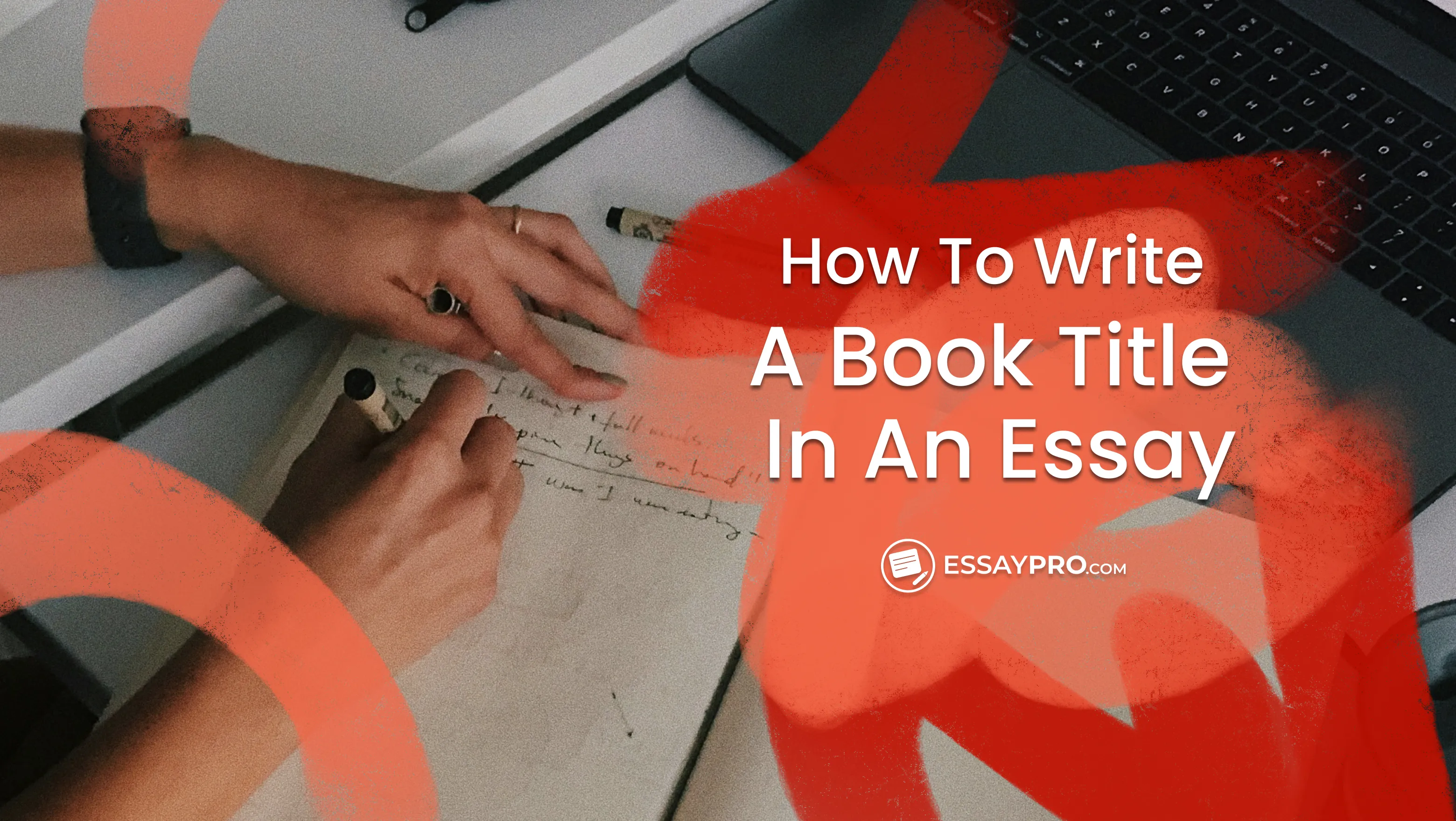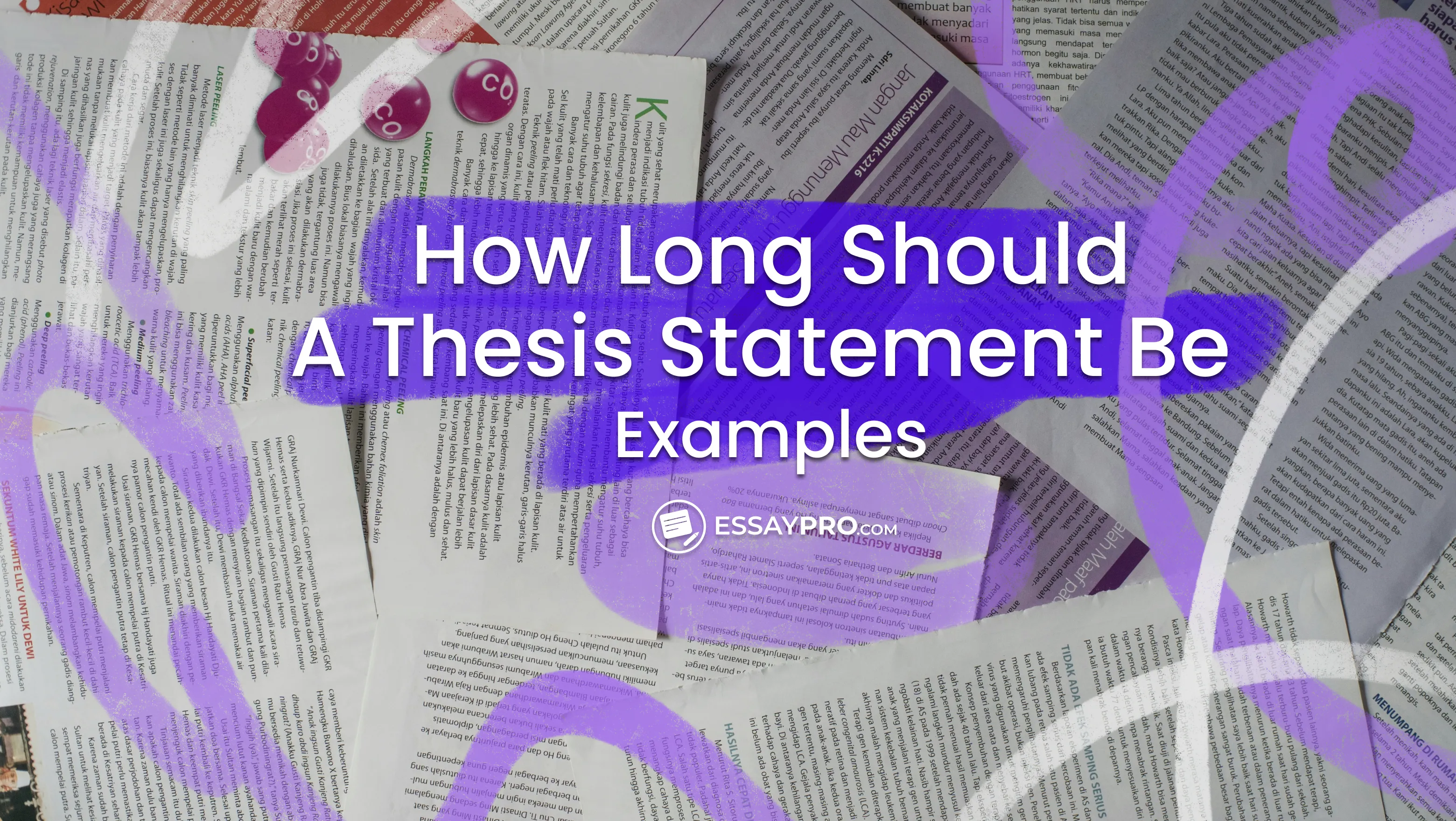Key Takeaways
- Persuasive essays use ethos, logos, and pathos to build credibility, logic, and emotion.
- A clear persuasive essay format keeps the argument organized and convincing.
- Strong writing depends on research, planning, and audience awareness.
- Careful revision sharpens clarity and impact.
A persuasive essay aims to change how the reader thinks or acts. Through logic and feeling, the writer builds a believable case. Evidence holds the argument together, so you can prove each one of your claims with facts. Before you start writing, know exactly where you stand and how to shape those thoughts clearly.
In this guide, you'll learn how to create a persuasive essay by following ten clear steps. Inside, you'll also see a simple outline that makes drafting easier to start and easier to finish. For anyone who needs an extra hand with structure or flow, EssayPro is always there to help. Just say, write my paper, and an experienced EssayPro writer will turn your notes into a polished essay.
What is a Persuasive Essay?
A persuasive essay is a piece of academic writing whose purpose is to convince readers of a specific point. When writing one, you choose a side and try to persuade the reader of it using convincing evidence, logic, and emotional appeal. Every argument of your essay must be backed up by solid facts, not just opinions, and carefully structured so it's easy to follow.
Persuasive Essay Techniques
Writers rely on three different techniques when they write a persuasive essay: ethos, logos, and pathos. Each appeal speaks to different parts of how people think and feel. Here’s how they work together to make your essay sound balanced and convincing.
Ethos
Ethos is about credibility. It shows the reader that your voice can be trusted. You build ethos when you use information from reliable research. You build it again when you quote professionals who know the topic well. Even tone matters here. A calm, confident style signals that your ideas rest on solid ground. In persuasive writing, writers use ethos by presenting facts that are checked and arguments that come from real expertise.
Logos
Logos deals with logic. It helps readers follow your thinking step by step. You use logos when you show proof through data or when you describe clear examples. You also use it when you explain cause and effect in simple terms. Each idea should lead naturally to the next, showing how every fact builds toward a proven point. Strong logos makes the essay's reasoning sound complete and steady.
Pathos
Pathos connects to feeling. When it's used right, the reader cares about what you write. For example, you create pathos when you include a personal moment because it touches emotion. But it doesn't replace logic, as some think. It simply works beside it to bring your claims to life. The argument stays with the reader far longer when they feel the point just as much as they rationally understand it.
A reliable persuasive essay writing service will help you correctly use the three techniques so your paper sounds balanced.
Persuasive Essay Structure
The structure of a persuasive essay follows a clear framework. When the parts below fit together, your writing feels natural and your reasoning stays strong. Here's a simple persuasive essay outline template.
- Introduction
- Start with a line that grabs attention right away.
- Give a little background so readers understand the topic.
- End with a clear thesis that shows your main point.
- Keep it short but focused so the reader knows what’s coming next.
- Body Paragraphs
- Focus each paragraph on one strong idea.
- Use real facts, examples, or quotes to back it up.
- Explain how your evidence supports the main argument.
- Add short transitions so the essay flows easily from one idea to another.
- Counterargument
- Mention a different opinion to show you understand both sides.
- Use reasoning or facts to explain why your view makes more sense.
- End by repeating your point to show it still stands firm.
- Conclusion
- Say your thesis again in simple words.
- Remind readers of your best points.
- End with a strong final line that feels complete.
- Leave readers with something to think about.
How to Write a Persuasive Essay in 10 Steps
A persuasive essay takes careful planning and patience. You first start by forming an opinion that's strong enough to defend. Then, you gather reliable evidence to convince the reader of your position. But that's not all you need to write one. Let's get into the real steps to writing a persuasive essay.
1. Define Your Position
Every persuasive essay begins with certainty. Before any writing takes shape, pause long enough to decide exactly what you believe. A position formed through logic, not instinct, gives your argument strength and balance. Think carefully about why this belief matters and what makes it worth defending in the first place. Once that clarity settles in, you can start thinking about persuasive essay topics.
2. Research the Issue
Strong persuasion grows out of real understanding. Before you begin writing, spend time exploring how people discuss your topic from different sides. Search for:
- Research papers
- Reliable reports
- Expert insights
At the same time, study the evidence that backs opposing positions. This way, you'll see where their reasoning begins and ends. With that awareness, your essay gains depth. As you read, record every source you might need when citing later.
3. Know Your Audience
There's never one argument that convinces everyone. Each reader carries a different perspective, which changes how your words land. A thought that sounds polished in a classroom might feel distant in casual writing. Before you begin, picture the people who will read your essay. Consider what they already know, what they believe, and what could move them. When you adjust tone with intention, your essay sounds like a conversation instead of an instruction.
4. Plan the Structure
An outline gives your ideas a path before they scatter. Without one, ideas overlap and logic starts to fade. Early planning may feel slow, yet it saves time when you start shaping full paragraphs. Each decision you make here turns a messy thought process into something deliberate.
- Begin with your thesis, a line that directs everything else. Add two or three supporting ideas that build naturally from it.
- Under each section, write short notes or reminders. Include examples, statistics, or moments of evidence that you want to expand later.
- Keep one space open for the counterargument. It reminds you to show balance and to prove that your reasoning holds steady against challenge.
- End with a few closing notes about tone or message. These help your conclusion return to the same clarity that opened the essay.
5. Write a Clear Thesis Statement
The thesis statement gives your essay its main meaning. Within a single sentence, you say what you believe and why the reader should care. Precision matters here more than style because this is arguably the most important step. A vague thesis blurs your argument, while a focused one directs the entire paper. Build a statement that shows both conviction and reasoning, not just opinion. Later, you can refine the phrasing, but clarity now will guide every line that follows.
6. Craft the Introduction
The introductory paragraph shapes how the reader steps into your essay. To begin, write a line that will catch the reader's interest and make them want to follow your thought. Include a brief context that shows why the topic matters at this time. Your thesis should come last, grounding the essay and setting its direction. This way, the opening pulls readers in while leaving them eager to see what comes next.
7. Build the Main Section
Body paragraphs carry the weight of your argument. Give each paragraph one central idea and stay with it until the point feels complete. Aim for clarity at every turn, not speed. Strong paragraphs grow through reason and rhythm that pull the reader along. Readers should move step by step until the logic feels solid.
- Start with a sentence that states the paragraph's main idea in plain terms.
- Next, add proof that feels real, such as data, studies, or concrete examples.
- Then, explain what that proof means and how it supports your thesis.
- Finally, close with a short transition that guides the reader to the next idea.
8. Respond to Opposition
Strong arguments don't hide from challenge. Before calling your essay complete, pause and consider what an opposing voice might say. When you acknowledge the other side, your reasoning feels tested and real. Defending your position against counterarguments also makes it more convincing. Explain the opposing point clearly, then counter it with steady evidence or logic that holds its ground.
9. Conclude Effectively
The conclusion ties every thread together. Restate your thesis with more confidence than you used in the beginning. Then draw out the broader meaning, like what the argument says about a larger issue or why it matters beyond the essay itself. Avoid simply repeating your points. Instead, give readers a reason to think or act differently after reading. A strong conclusion leaves an impression that stays after the last line.
10. Refine Your Work
Revision turns a draft into an argument worth reading. Step away from the essay for a few hours, then return with a fresh perspective. Read it out loud and listen for awkward rhythm or unclear phrasing. Pay attention to how each section connects. If the logic feels uneven, adjust it until the flow feels smooth again.
- Review transitions between paragraphs to check for clarity.
- Correct any grammar or punctuation issues that break rhythm.
- Make sure every paragraph relates directly to the thesis.
- Trim filler words that weaken your tone or add confusion.
You might also find it useful to learn how to write an argumentative essay. Check it out to see simplified tips for writing.
Persuasive Essay Checklist
A few minutes of careful checking can make your essay stronger. So, read through this checklist and see if you've done everything to make sure your message feels solid.


Tips For Writing A Persuasive Essay
Surface-level arguments will not cut it when you're trying to change someone's mind. You need everything (strategy, voice, and structure) to point in one direction: making your case as strong as possible. These tips will help you write something convincing that actually works, not just reads well:
- Write what you believe: Don’t pick a stance just because it sounds “safe” or academic. Your writing will feel more confident if you defend the point you actually believe in. Your argument will come across as more authentic this way, too.
- Think like your reader: A persuasive essay should read like a conversation. Try to imagine someone who doesn't agree with you and address whatever they would push back on. If you can fairly explain the other side and still prove your point, your argument instantly becomes more credible.
- Don't bury your strongest point: Don’t save your best argument for the end like it’s a movie twist. Put it early, where it can do the most work. Once you’ve got the reader hooked, the rest of your points can build on that.
- Use facts to back emotions: Yes, it’s okay to appeal to values and emotion; that's pathos, and we've already said it makes your arguments feel personal. But emotion only matters if there are facts behind it. Say that something is wrong, but then explain why it feels wrong. That's what persuades people.
- Avoid trying to sound “smart”: Don't write five-syllable words when a short, clear sentence would do more. Overly academic, textbook-like writing will make the reader instantly tune out. Read your writing out loud and rethink it if it sounds off.
- Visualize your argument like a domino setup: Each point you make should knock into the next, with a clear connection that keeps the essay flowing. If one piece feels disconnected, adjust it until everything fits.
- Let the conclusion echo, not repeat: Your conclusion shouldn't just summarize everything and end. Use the final paragraph to leave the reader with something to think about: a what-if or even a reminder of why your argument matters.
Still struggling to get your persuasive essay right after this? Don't panic just yet! You can always buy essay paper from EssayPro, so you can stop stressing about creating the outline or finding credible sources.
Bringing It All Together
A persuasive essay isn’t just an exercise in logic, nor is it just a random academic skill. Knowing how to build and write a strong persuasive essay means that you know how to make an argument that lands and how to back it up with concrete facts to make it stronger. Your words hold weight when they are backed by logic. That's what makes persuasive writing powerful: its ability to make people pause and rethink what they thought they knew.
If you and that blank page are still in a staring contest or your draft just isn't coming together the way you hoped, there's absolutely no shame in asking for an extra hand. EssayPro is a reliable service where all students can find professional academic help. Our expert writers can help bring your strongest arguments to life in 100% authentic papers.
FAQs
How to Make a Persuasive Essay?
Create a structured outline and decide where each one of your ideas will go. Once you’ve picked a side, stay committed to it from beginning to end. Take time to research carefully, so your argument is backed by facts that actually hold weight. As you write, keep your points clearly connected to each other and also to your main argument. And while you're making your case, make space for the other side too, even if you're about to prove it wrong.
How to Start a Persuasive Essay?
You should always start your essay with a bold claim, a surprising stat, or generally something that will pull the reader in right away. Then, follow it up with a little context so the reader isn't dropped straight into action. End the intro with a focused thesis statement that tells them exactly where you stand.
How to Conclude a Persuasive Essay?
End your persuasive essay by rephrasing your essay (don't be repetitive!) and reminding the reader of your strongest points. The last sentence should be the one that leaves the reader thinking and makes your argument stick.
How to Structure a Persuasive Essay?
A persuasive essay follows a simple structure:
- Introduction presenting the thesis.
- Body supporting main points with evidence.
- Counterargument addressing opposing views.
- Conclusion restating the main stance.
What Does a Persuasive Essay Look Like?
A persuasive essay presents ideas in a logical order. It opens with a strong introduction, develops each main point in focused paragraphs, and ends with a decisive conclusion. Every sentence supports the central argument with reasoning, evidence, and a confident tone.

Ana Ratishvili
Ana is a professional literary writer with a Master’s Degree in English literature. Through critical analysis and an understanding of storytelling techniques, she can craft insightful guides on how to write literary analysis essays and their structures so students can improve their writing skills.
- Microsoft 365. (2023, January 9). How To Write A Persuasive Essay. Microsoft 365. https://www.microsoft.com/en-us/microsoft-365-life-hacks/writing/how-to-write-a-persuasive-essay
- Strategies for Essay Writing. (2019). https://www.harvard.edu/. https://writingcenter.fas.harvard.edu/pages/strategies-essay-writing
- Purdue University . (2020). Argumentative essays // Purdue writing lab. Purdue Writing Lab. https://owl.purdue.edu/owl/general_writing/academic_writing/essay_writing/argumentative_essays.html







